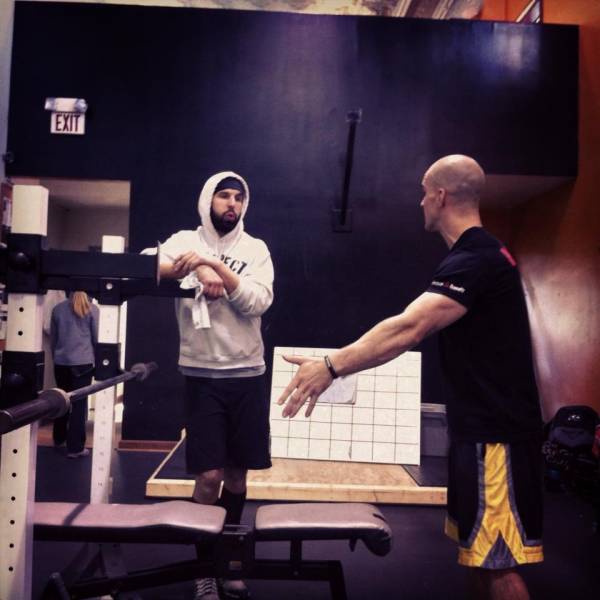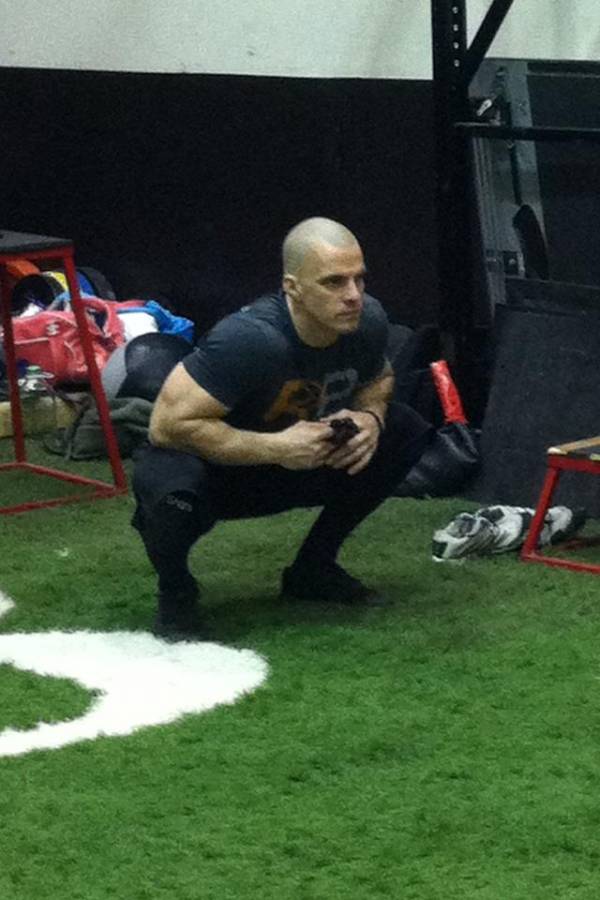I cannot tell you how many countless times I have seen trainers and/or coaches scrambling around just minutes before their class(es) start, throwing equipment down(in no particular order), scribbling random workouts up on the whiteboard, and all the meanwhile scratching their sweaty chins trying to figure out (in a minute or less) what in the world they are going to do with all this equipment for an hour. This is the “pre-workout” most do not see and that is the careless, unplanned, randomly made-up workout that will (hopefully) last at least an hour – and two minutes. (We wouldn’t want to “short” our clients or athletes, right?) The problem however, is that they are shorting their athletes and clients and in more ways than just a workout.
Poor programming (or complete lack and disregard of) really puts everyone in jeopardy, coaches and athletes alike. When anyone, be it a wife, mom, dad, husband, athlete, student athlete, etc., comes to train, there is a particular reason for them for doing so. Their goals may be different (and almost always are) but one thing remains the same – they want to succeed and they trust you to help them do that. This is why they are here and why they continue to show up and to train hard, day in and day out, all times of the day. They pay us as coaches and trainers to do the work behind the scenes and that work (done properly) doesn’t take place in the last two minutes before a class or training session.
Programming takes time, experience, a little bit (or a big bit) of science, forethought, and planning. It also takes knowing the athletes and what their goals are in order to train them well and efficiently, and to be able to coach them on to be their best and to reach those goals injury-free. Every individual is different and in sport, just like anything else, no one size fits all. Everyone has a different athletic history and a different fitness goal and level.
Coaches and trainers: it is your responsibility to consider each person and what it is that they want as you tailor every workout and/or session to meet their needs. That one hour (and two minutes) is not our time to shine, but it is theirs. It is simply not enough to dance around while neglecting form and technique, yell, pump up the music, or motivate (as great as that is – as a supplement), but there must be real care, effort, and thought throughout, and that time starts long before the clock does.
5 Facets of Proper Programming
1. Individualized, personally tailored workouts.
 Programming provides athletes and clients with the kind of strength, conditioning, endurance, and/or sport training that improves on and reflects individual strengths and weaknesses. For example, I would not expect my mom to clean and jerk like I would one of my other, younger weightlifting athletes. This is not because a 70-year-old woman cannot (or should not) lift in such a manner, but this is never and will never be a goal of hers. She wants to be fit and healthy, and as a coach, it is my job is to get her fitter and healthier by way of thoughtful and smart programming, tailored to her needs.
Programming provides athletes and clients with the kind of strength, conditioning, endurance, and/or sport training that improves on and reflects individual strengths and weaknesses. For example, I would not expect my mom to clean and jerk like I would one of my other, younger weightlifting athletes. This is not because a 70-year-old woman cannot (or should not) lift in such a manner, but this is never and will never be a goal of hers. She wants to be fit and healthy, and as a coach, it is my job is to get her fitter and healthier by way of thoughtful and smart programming, tailored to her needs.
2. Designed for achieving both long and short-term goals.
You have to know why you are training and more than that, where you want to ultimately end up. This is result-based programming design. To do that, as a client or athlete and as a coach or trainer, you must have a plan. Doing the same thing day in and day out (and this is usually because it is easier for a trainer to throw thirty people in one session and have them run around in circuits with no real thought as to why or what for) can not only cause one to be more prone to injury (high repetition with poor form), but also puts them at risk of getting stuck in the same rut with little or no improvement. Designing a program that is result-based with real set goals in mind builds up an athlete one workout at a time.
3. Tracks progress, builds on successes, pinpoints weaknesses and strengths.
It is extremely important to take clients and athletes through the natural progression of a program in order to obtain (and then maintain) results. Programming that is personalized picks apart weaknesses and strengths, causing goals to be met much faster. Keeping an eye on achievements allows for sessions designed around maintaining those new successes and then building on them.
4. Eliminates plateaus.
 As an athlete and as a coach you both have to know where you are now in order to really see and determine where you want to be and will (realistically) be within a given time frame. Without some real science, numbers, percentages, timed workouts, etc., there is no data to track and without that, there is no real track-able goal to reach and then surpass. It is the responsibility of the coach/trainer as well as the client to write these down. Too often we rely on “feelings.” In other words, one day we might “feel” slow, but seeing the stopwatch clocked at a personal record changes things. The clock doesn’t lie but emotions can and all too often do. Now we have a real goal so write it down and program the next one accordingly. Fitness is not “magic” – it is science (and smartly-designed hard work). Staying constantly varied gets you over the humps faster and great programming helps you avoid them altogether.
As an athlete and as a coach you both have to know where you are now in order to really see and determine where you want to be and will (realistically) be within a given time frame. Without some real science, numbers, percentages, timed workouts, etc., there is no data to track and without that, there is no real track-able goal to reach and then surpass. It is the responsibility of the coach/trainer as well as the client to write these down. Too often we rely on “feelings.” In other words, one day we might “feel” slow, but seeing the stopwatch clocked at a personal record changes things. The clock doesn’t lie but emotions can and all too often do. Now we have a real goal so write it down and program the next one accordingly. Fitness is not “magic” – it is science (and smartly-designed hard work). Staying constantly varied gets you over the humps faster and great programming helps you avoid them altogether.
5. A coach or trainer who programs cares.
Trust me, a lot of work goes into real and thoughtful programming. Who doesn’t want a coach or a trainer who spends many late nights and many hours researching and planning ways for you to reach your goals? Knowing that you can trust someone who knows from experience and who does this not only for a living but also with a passion for his/her work should put your mind at ease. Great coaches care. Your job as an athlete/client is to show up and to work hard knowing the rest has been very carefully thought out for you. Now, all you need to do is give it everything you have, put in the effort, be patient, and stick to the programming.
“Perfect technique + great programming = optimal results.” – Jeff Martone
Photos courtesy of Katie Chasey and RXBound.






